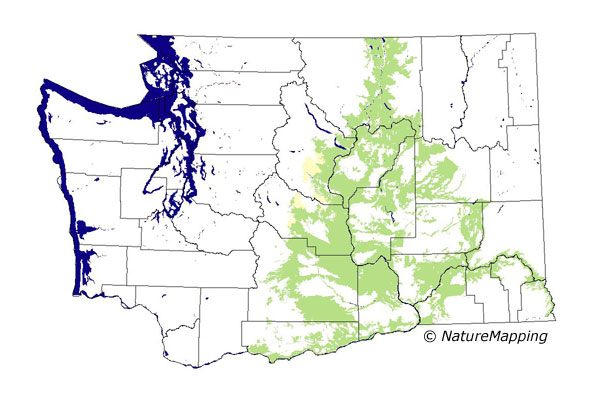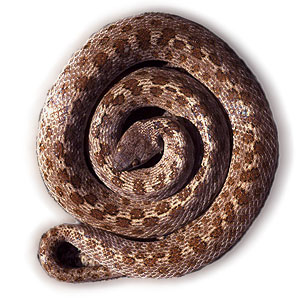
Breeding Range Map
The green area shows the predicted habitats for breeding only.
© NatureMapping Program
+ enlarge map
Predicted breeding range
 = Core Habitat = Core Habitat
 = Marginal Habitat = Marginal Habitat
|
|

Fact Sheet:
Basic |
Advanced |
Español
Breeding Range Map
Reptiles do not migrate as some birds and mammals, so the colored areas depict the predicted range for the Night Snake year-round. The habitats were identified using 1991 satellite imagery,
other datasets and experts throughout the state, as part of the Washington Gap Analysis Project.

Observations
|
Metadata
(Data about data or how the map was made)
Distribution and Habitat Requirements
The Night snake has been found in a variety of habitats in Idaho, including
rocky areas along the canyon rim of the Snake River, at the base of talus
slopes, and in shadscale and greasewood areas away from the Snake River Canyon
(Diller and Wallace, 1981).
Models
The Columbian Basin, Southeast Cascades, and East Central Cascades ecoregions
were selected. The Central Arid Steppe, Wheatgrass/Fescue, Three-tip Sage,
Canyon Grasslands, Big Sage/Fescue and Ponderosa Pine vegetation zones were
core. The Douglas-fir zone in the East Central Cascades was marginal.
Good habitats were cliffs, talus slopes, grasslands, shrub savannas, shrublands,
rivers and riparian wetlands with emergent herbs/shrubs and hardwood trees.
Translated from the Washington Gap Analysis Amphibians and Reptiles Volume by Karen Dvornich
Webpage designed by Dave Lester.
|

